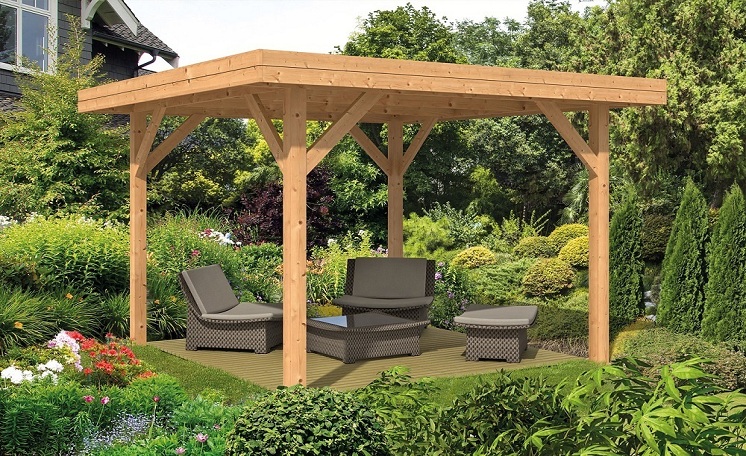There are fewer things prettier than a gazebo in the backyard. But did you know that these pretty gazebos have a very history? They date back more than 5,000 years old. From Egyptians to the Greeks, Romans, Chinese and Persians everyone seemed quite partial to the gazebo. We see them in fairy tale illustrations, classical paintings and other printed mediums that date back centuries. Today you can also find glossy spreads with pictures of modern wooden gazebos.
Gazebo or pergola?
What is the difference between a gazebo and a pergola and which one is more suitable for you? Both seem very similar, with wooden beams supporting a type of roof. The difference lies in the structure. The gazebo has a large octagonal shape. They were built as a place to gather or relax. They were built in gardens, hillsides, by streams or anywhere that seems pretty with a great view.
Pergolas are often confused with gazebos. But the former is usually rectangular or square in shape, while a gazebo is octagonal. A pergola can be quite small, just a rectangular structure built over a pathway. A gazebo is typically larger and meant to act as a place to sit and relax. A gazebo will have a roof where a pergola only has wooden beams. Pergolas are more common in hot and tropical areas where people grow creepers on the pergola to create a shade.
Gazebos around the world
Some people think that the word gazebo appeared in the late 17th or early 18th century. It was an amalgamation of the English word ‘gaze’ and the Latin word ‘ebo’, which means ‘I shall’. So, the word quite literally means ‘I shall gaze’. It indicates the common positioning of a Gazebo. It was typically made in a picturesque location so as to enjoy a great view. These pretty gazebos were built in any number of places — backyards, gardens, hillsides and by streams.
One of the most famous examples are the four gazebos in Louvre, France. The English adapted the French style and gazebos were quite common in 15th century English gardens. Many of the classical gazebos were made of marble. In fact, you will still find such Greek and Roman gazebos. The other popular choice was wooden gazebos.
Another strong influence in gazebos style has come from Japanese and Chinese gazebos. Often made of wood, these gazebos served as teahouses. They are characterised by their peaked roof and clean lines. Their spartan, but elegant style remains popular even today.
Building a gazebo
There are three options you can try if you want to build a gazebo:
- Build it yourself: If you have carpentry skills, you can try building it yourself. It’s a fairly simple design. But you may need a little help in determining the right proportions or if you want to build something artistic.
- Get a carpenter: You can ask your carpenter to build one for you. But do make sure that the carpenter has some experience in making gazebos.
- DIY kits: Today you can get easy-to-install readymade gazebos that don’t require any extra effort! You can set up these wooden gazebos yourself or get a carpenter to do it for you.



